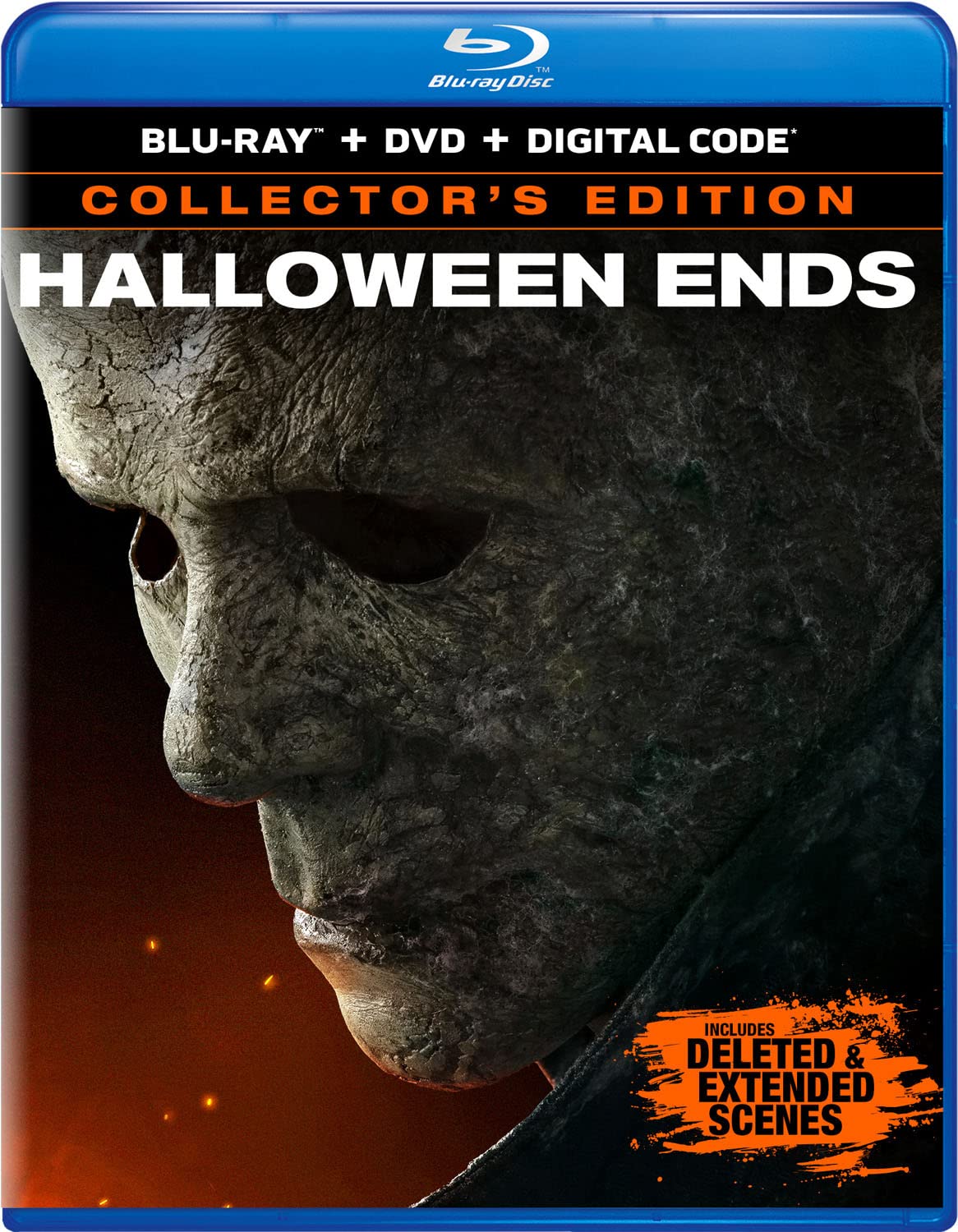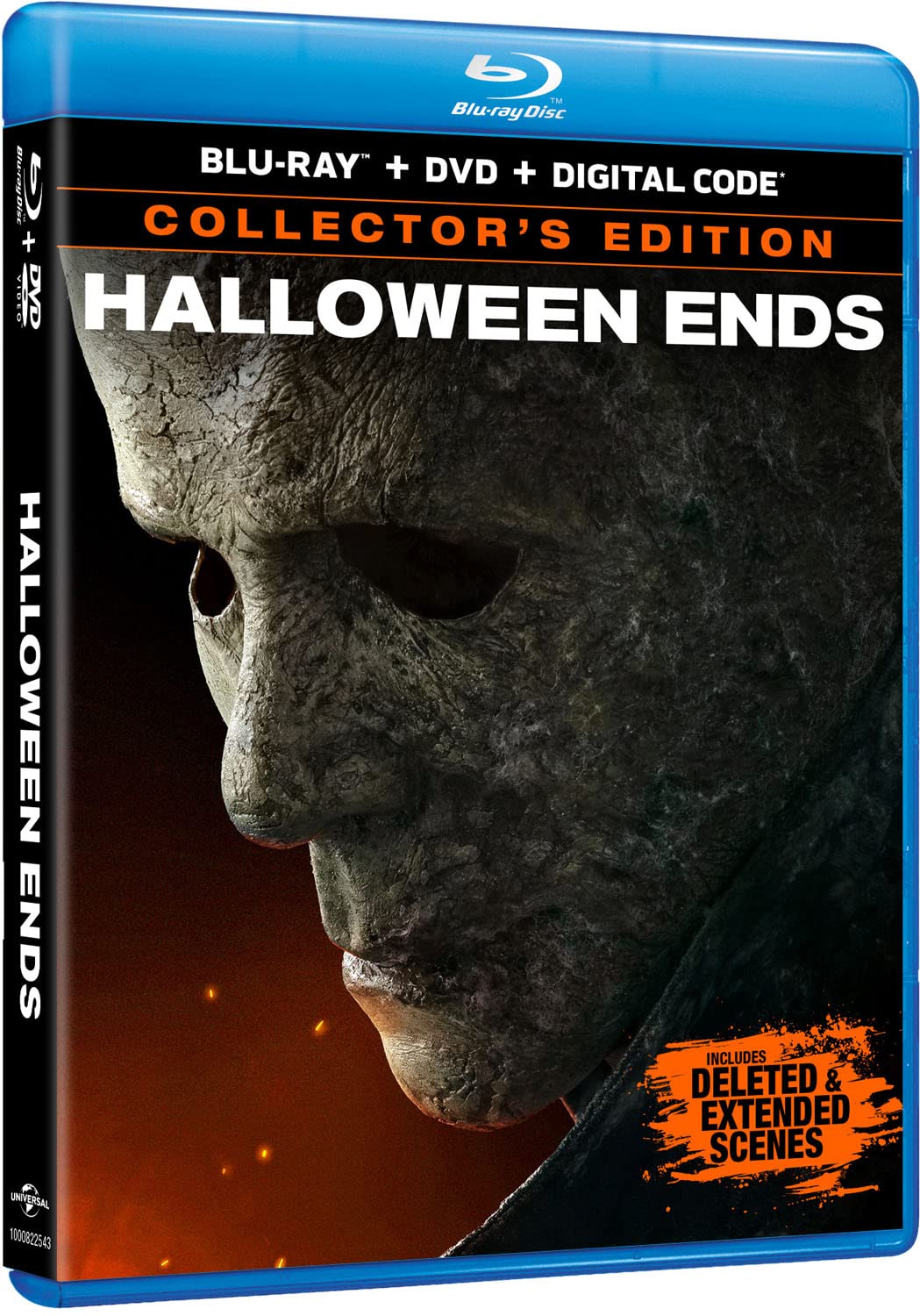
Halloween Ends (2022) – Collector’s Review Halloween Ends – Oemiu
Halloween Ends (2022) – Collector’s Review
Halloween. A name synonymous with terror, suspense, and Michael Myers. For over four decades, the saga of Laurie Strode and the seemingly unkillable Shape has haunted our screens, evolving from a simple slasher flick into a complex exploration of trauma, fear, and the cyclical nature of evil. With “Halloween Ends” (2022), director David Gordon Green aimed to deliver a definitive conclusion to this iconic story, a final showdown that would leave audiences breathless and perhaps, divided. This collector’s review delves into the film’s narrative choices, performances, technical aspects, and ultimately, its success (or failure) in delivering a satisfying ending to a legacy that has shaped the horror genre. We’ll be taking a hard look at what the Halloween Ends movie brings to the table and analyzing if this is the end of the story, or just the end of this chapter.
The Weight of Expectations and Narrative Risks
The modern “Halloween” trilogy, beginning with Green’s 2018 film, positioned itself as a direct sequel to John Carpenter’s original 1978 masterpiece, effectively erasing all subsequent entries from canon. This bold move immediately raised the stakes and placed immense pressure on the creative team to honor the legacy while forging their own path. “Halloween” (2018) was largely successful in this regard, providing a visceral and terrifying return to form. “Halloween Kills” (2021), however, proved to be a more divisive chapter, criticized by some for its excessive gore and perceived lack of narrative focus. This set the stage for “Halloween Ends,” a film tasked with not only wrapping up the trilogy but also justifying the choices made in its predecessor. “Halloween Ends” took a considerable narrative risk by shifting focus away from the direct confrontation between Laurie and Michael for a significant portion of its runtime. Instead, the film introduces Corey Cunningham, a young man ostracized by the Haddonfield community after a tragic accident. Corey’s journey, his descent into darkness, and his eventual connection to Michael Myers form the core of the film’s narrative. This focus on a new character, while arguably a bold creative decision, alienated some fans who felt it detracted from the expected Laurie vs. Michael showdown. The film attempts to explore the idea of evil as a contagious force, one that can infect and corrupt individuals susceptible to its influence. Whether this theme resonated with audiences is debatable, but it undeniably veered away from the traditional slasher formula. The film also grapples with the concept of trauma and how it can shape individuals and communities. Laurie Strode, now living with her granddaughter Allyson, is attempting to heal and move on from the events of the past. However, the presence of Michael Myers, even in his absence, continues to cast a long shadow over her life and the town of Haddonfield. This exploration of trauma is a recurring theme throughout the trilogy, but in “Halloween Ends,” it is given greater prominence. The community’s reaction to Corey’s misfortune serves as a microcosm of their collective trauma, highlighting the ways in which fear and suspicion can breed resentment and violence. This complex tapestry of themes, while ambitious, ultimately contributed to the film’s polarizing reception. Many viewers felt that the film was too preoccupied with exploring these themes at the expense of delivering the visceral horror and satisfying conclusion they had anticipated.
Corey Cunningham: A New Face of Evil?
The introduction of Corey Cunningham is arguably the most controversial aspect of “Halloween Ends.” The decision to dedicate a significant portion of the film to his character arc, rather than focusing solely on Laurie and Michael, was a gamble that ultimately backfired with many viewers. Corey is presented as a sympathetic figure, a young man whose life is tragically derailed by a senseless accident. The community’s relentless judgment and ostracization push him further down a path of anger and resentment, making him susceptible to the influence of Michael Myers. As Corey becomes increasingly violent and unhinged, the film attempts to draw parallels between him and Michael, suggesting that evil can manifest in different forms and that it can be perpetuated by societal factors. This is a departure from the traditional portrayal of Michael Myers as a purely irrational and unstoppable force of nature. In “Halloween Ends”, the evil of Michael Myers is perhaps less about the man himself and more about the societal trauma that breeds more violence. Some viewers found Corey’s character arc compelling and thought-provoking, arguing that it added a new layer of complexity to the “Halloween” mythology. They saw him as a symbol of the ways in which fear and trauma can corrupt individuals and that his story served as a cautionary tale about the dangers of unchecked anger and resentment. However, many other viewers felt that Corey’s character was unnecessary and that his presence detracted from the overall narrative. They argued that the film should have focused solely on the Laurie vs. Michael confrontation and that Corey’s story was a distraction that ultimately diluted the impact of the ending. Furthermore, some critics argued that Corey’s transformation into a killer felt rushed and unconvincing, making his motivations unclear and his actions difficult to understand. The character of Corey Cunningham has been a huge part of the debate surrounding the success of the Halloween Ends movie.
The Final Showdown and its Aftermath
Despite the film’s focus on Corey Cunningham, the inevitable showdown between Laurie Strode and Michael Myers does eventually occur. However, the confrontation is surprisingly brief and, for some, anticlimactic. After all the build-up, decades of trauma, and near-death experiences, the final battle feels somewhat underwhelming. The filmmakers perhaps aimed for a more grounded and realistic portrayal of violence, but the result left many viewers feeling unsatisfied. The brutality inflicted upon Michael in the final scene is undeniable, and perhaps cathartic for Laurie and the town of Haddonfield. However, the decision to portray Michael as frail and diminished in his final moments further alienated some fans who preferred the image of the unstoppable killing machine. One common sentiment is that the portrayal of Michael Myers in “Halloween Ends” doesn’t give proper respect to the character’s history. The burning of Michael’s body in a junkyard serves as a symbolic cleansing of evil from Haddonfield, but whether it truly represents the end of the “Halloween” saga remains to be seen. The film’s ending is ambiguous, leaving room for interpretation and speculation about the future of the franchise. Some viewers believe that the final scene implies that evil can never be truly eradicated, and that it will always find a way to resurface. Others believe that the burning of Michael’s body represents a definitive end to the story, and that Laurie Strode has finally achieved peace. Ultimately, the success of the ending depends on the individual viewer’s interpretation and expectations. It is a divisive conclusion that is likely to be debated and analyzed for years to come. Regardless, the film’s legacy within the “Halloween” franchise will undoubtedly be complex and controversial. The final showdown in Halloween Ends with Michael Myers is a point of major contention.
Performances and Technical Aspects
Jamie Lee Curtis delivers a powerful and nuanced performance as Laurie Strode, portraying a woman grappling with trauma and determined to protect her family. Her portrayal of Laurie as a survivor, a warrior, and a grandmother is compelling and emotionally resonant. Rohan Campbell, as Corey Cunningham, also delivers a strong performance, capturing the character’s vulnerability, anger, and descent into darkness. His portrayal of a troubled young man seeking acceptance and understanding is both sympathetic and disturbing. The supporting cast, including Andi Matichak as Allyson, provides solid performances, although their roles are somewhat limited by the film’s focus on Laurie and Corey. From a technical standpoint, “Halloween Ends” is a well-crafted film. The cinematography is visually striking, capturing the atmosphere of Haddonfield and the darkness that lurks beneath the surface. The score, composed by John Carpenter, Cody Carpenter, and Daniel Davies, is suitably chilling and atmospheric, paying homage to the original “Halloween” score while adding its own unique elements. The sound design is also effective, creating a sense of dread and tension throughout the film. The editing, however, is somewhat uneven, with some scenes feeling rushed and others feeling unnecessarily drawn out. The pacing of the film is also a point of contention, with some viewers finding it too slow and others appreciating the film’s deliberate and methodical approach. Despite these minor flaws, the technical aspects of “Halloween Ends” are generally strong, contributing to the film’s overall atmosphere and impact. While the performance of the cast is generally praised, whether or not the acting saves the script is another matter. There is a consistent tone and a sense of realism in the characters performances which makes the horror they find themselves in believable.
| Feature | Description |
|---|---|
| Director | David Gordon Green |
| Starring | Jamie Lee Curtis, Andi Matichak, Rohan Campbell, James Jude Courtney |
| Music | John Carpenter, Cody Carpenter, Daniel Davies |
| Cinematography | Michael Simmonds |
| Running Time | 111 minutes |
Conclusion: A Divisive Finale?
“Halloween Ends” is a film that is likely to elicit strong reactions, both positive and negative. It is a bold and ambitious film that takes risks and challenges audience expectations. It is not a traditional slasher film, but rather an exploration of trauma, fear, and the cyclical nature of evil. Whether it succeeds in delivering a satisfying conclusion to the “Halloween” saga is a matter of personal opinion. Some viewers will appreciate the film’s thematic depth and its willingness to deviate from the established formula. They will see it as a thought-provoking and emotionally resonant ending to a beloved franchise. Others will be disappointed by the film’s focus on Corey Cunningham, its brief and anticlimactic final showdown, and its ambiguous ending. They will see it as a betrayal of the “Halloween” legacy and a missed opportunity to deliver a truly terrifying and satisfying conclusion. Ultimately, “Halloween Ends” is a film that demands to be discussed and debated. It is a film that will stay with viewers long after the credits have rolled. Whether it is remembered as a triumphant finale or a disappointing misstep remains to be seen. It is a film that can’t be looked at only from the surface. Deeper themes of intergenerational trauma are clearly at play. The Halloween Ends movie isn’t a simple slasher film. It is a complicated and sometimes ambiguous piece of art. What is obvious is that the film tried to offer something different, a deeper and more nuanced exploration of the impact of Michael Myers on Haddonfield. But whether it succeeded in those goals is really up to the individual viewer.
FAQ
Is Halloween Ends really the end of the franchise?
While “Halloween Ends” is billed as the final installment in the “Halloween” saga, the history of the franchise suggests that this may not be the case. The “Halloween” franchise has been rebooted and retconned multiple times throughout its history, and it is entirely possible that the story could be revisited in the future, either through a new film, a television series, or some other medium. The enduring popularity of Michael Myers and the “Halloween” franchise guarantees that there will always be interest in exploring new stories within this universe. From a financial perspective, horror franchises with established IP continue to perform well at the box office, making a potential return to the Halloween universe a constant likelihood. It all depends on the creative vision and how the existing legacy will be either honored or reconceptualized. The film ends with a symbolic burning of Michael Myers’ mask and body, suggesting a finality. However, this ending is open to interpretation, and it remains to be seen whether Michael Myers will ever return to terrorize Haddonfield.
What are the main criticisms of the movie?
The main criticisms of “Halloween Ends” revolve around its narrative choices, particularly the focus on the new character, Corey Cunningham. Many viewers felt that the film devoted too much time to Corey’s story, detracting from the Laurie vs. Michael confrontation they were expecting. Others criticized the film’s pacing, feeling that it was too slow and that the plot meandered. Some viewers also found the portrayal of Michael Myers to be disappointing, feeling that he was not as menacing or formidable as he had been in previous films. The ambiguity of the ending also drew criticism, with some viewers finding it unsatisfying and others finding it thought-provoking. Ultimately, the criticisms of “Halloween Ends” stem from its departure from the traditional slasher formula and its attempt to explore more complex themes. The choice to have a new character serve as a primary antagonist took many by surprise. The movie was advertised as a battle between Laurie Strode and Michael Myers, so the misdirection was not taken well.
What are the main strengths of the movie?
Despite its criticisms, “Halloween Ends” also has several strengths. Jamie Lee Curtis delivers a compelling and emotionally resonant performance as Laurie Strode, and Rohan Campbell gives a strong performance as Corey Cunningham. The film’s exploration of trauma and the cyclical nature of evil is thought-provoking, and the cinematography and score are effective in creating a sense of dread and tension. The film’s willingness to take risks and challenge audience expectations is also commendable, even if it did not resonate with all viewers. For some, the film’s ambiguous ending is a strength, leaving room for interpretation and discussion. The film’s commentary on how trauma impacts a community is also a major strength, offering depth beyond simple horror.
How does Halloween Ends compare to the other movies in the franchise?
“Halloween Ends” is a unique entry in the “Halloween” franchise, differing significantly from many of its predecessors. It is less of a straightforward slasher film and more of a character study exploring trauma and the nature of evil. Compared to the other films in the David Gordon Green trilogy, “Halloween Ends” is arguably the most divisive. While “Halloween” (2018) was largely praised as a return to form and “Halloween Kills” was criticized for its excessive gore and lack of focus, “Halloween Ends” introduced new elements and took significant narrative risks that alienated some viewers. Compared to the original “Halloween” (1978), “Halloween Ends” is a very different film. The original was a simple and effective slasher film, while “Halloween Ends” attempts to explore more complex themes. Whether it succeeds in this endeavor is a matter of personal opinion. Overall, “Halloween Ends” is a polarizing film that stands apart from many of the other entries in the “Halloween” franchise.
Was the character of Corey Cunningham necessary?
The necessity of Corey Cunningham’s character is a point of contention among viewers. Some argue that his character arc was a compelling exploration of the ways in which fear and trauma can corrupt individuals, adding a new layer of complexity to the “Halloween” mythology. They see him as a symbol of the cyclical nature of evil and a cautionary tale about the dangers of unchecked anger and resentment. Others argue that Corey’s character was unnecessary and that his presence detracted from the overall narrative. They feel that the film should have focused solely on the Laurie vs. Michael confrontation and that Corey’s story was a distraction that ultimately diluted the impact of the ending. Ultimately, whether Corey Cunningham’s character was necessary is a matter of personal opinion. His inclusion was a bold creative choice that added a new dimension to the film, but it also alienated some viewers who felt that it detracted from the core story. There are strong arguments on both sides of the debate.
Did Laurie Strode finally find peace?
The ending of “Halloween Ends” suggests that Laurie Strode may have finally found a degree of peace, although the road to get there was a difficult one. After decades of trauma and near-death experiences, she appears to have come to terms with her past and is ready to move on with her life. The burning of Michael Myers’ body can be interpreted as a symbolic cleansing of evil from Haddonfield, allowing Laurie to finally let go of the fear that has haunted her for so long. However, the film’s ambiguous ending also leaves room for doubt. The possibility remains that evil can never be truly eradicated, and that it will always find a way to resurface. Ultimately, whether Laurie Strode truly found peace is a matter of personal interpretation. The film suggests that she has made progress in her healing journey, but it also acknowledges the enduring nature of trauma and the possibility that the past will always linger. Even after the confrontation with Michael, it is difficult to say Laurie will live happily ever after.
How does the score contribute to the film’s atmosphere?
The score of “Halloween Ends,” composed by John Carpenter, Cody Carpenter, and Daniel Davies, plays a crucial role in creating the film’s atmosphere of dread and tension. The score pays homage to the iconic original “Halloween” score while adding its own unique elements, blending familiar themes with new and unsettling sounds. The use of synthesizers and minimalist melodies creates a sense of unease and suspense, mirroring the psychological state of the characters and the underlying darkness of Haddonfield. The score also effectively underscores the film’s emotional moments, amplifying the impact of Laurie Strode’s trauma and her determination to protect her family. Overall, the score is an integral part of the film’s success in creating a chilling and atmospheric experience for the audience. The combination of old and new is a powerful component in establishing the film’s tone.




Price: $10.73 - $9.49
(as of Sep 04, 2025 12:56:33 UTC – Details)



![Scary Stories To Tell In The Dark [DVD]](https://oemiu.com/wp-content/uploads/2025/09/1757427628_Scary-Stories-To-Tell-In-The-Dark-DVD-Review-Best-336x220.jpg)
